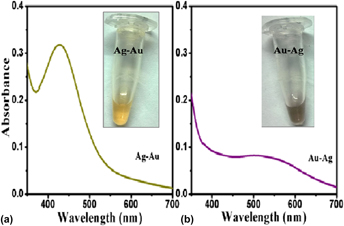Published online by Cambridge University Press: 18 October 2016

The potency of many biomedical applications of gold nanoparticles (AuNPs); i.e., (i) bioimaging, (ii) diagnostic, (iii) therapeutic, (iv) drug carriers, and (v) immunochemical properties; are limited due its sensitivity toward salt and pH allowing variation in nanogeometry during practical applications. Such limitations directed the synthesis of AuNPs having extreme salt and pH resistant ability which has been undertaken in current research program. It has been found that the pH and salt tolerance ability of AuNPs are dependent on the nature of reducing and stabilizing agents. The use of organic amine containing reagents, i.e., polyethylenimine, 3-aminopropyltrimethoxysilane, in the presence of formaldehyde is examined that allows controlled and rapid synthesis of AuNPs having salt and pH tolerance ability. The mechanism justifying these properties of as-made AuNPs are presented herein. These reagents not only allow the synthesis of monometallic nanoparticles (NPs) but also enable the synthesis of bimetallic and trimetallic NPs. The synthesis of Au–Ag/Ag–Au, Pd-Au/Ag@(PdAu) NPs are examined involving the contribution of organic amine.
Contributing Editor: Lennart Bergström
This paper has been selected as an Invited Feature Paper.